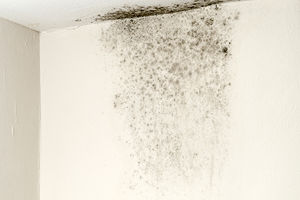 Dampness and persistent moisture in buildings is a real health concern for building owners, contractors, engineers, and maintenance professionals that are responsible for occupant safety. Moisture accumulation can increase health risks when indoor dampness has become typical, rather than unusual, especially for people with asthma or allergies. Indicators that have each been shown to be associated with health-relevant dampness include moldy/musty odors, visible mold or mildew growth, water damage, visible moisture on surfaces, and previous floods or leaks (WHO 2009; Mendell 2011; Kanchongkittiphon 2015).1
Dampness and persistent moisture in buildings is a real health concern for building owners, contractors, engineers, and maintenance professionals that are responsible for occupant safety. Moisture accumulation can increase health risks when indoor dampness has become typical, rather than unusual, especially for people with asthma or allergies. Indicators that have each been shown to be associated with health-relevant dampness include moldy/musty odors, visible mold or mildew growth, water damage, visible moisture on surfaces, and previous floods or leaks (WHO 2009; Mendell 2011; Kanchongkittiphon 2015).1
Public health authorities have documented consistent associations between damp buildings and increased risks of adverse health effects, including exacerbation of existing asthma, new asthma, respiratory infections, and allergic rhinitis (IOM 2004; WHO 2009). In addition, credible researchers have documented a causal link between damp buildings and exacerbations in children with asthma (Kanchongkittiphon 2015).2
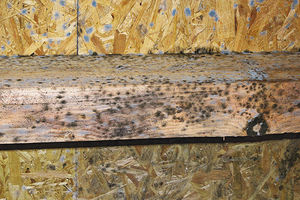 Persistent indoor dampness not only impacts occupant’s health, but it also can lead to structural risks, building damage, and costly repairs. So, what is considered persistent dampness relating to a health risk level?
Persistent indoor dampness not only impacts occupant’s health, but it also can lead to structural risks, building damage, and costly repairs. So, what is considered persistent dampness relating to a health risk level?
- Constant water activity levels above 0.75 at surfaces of organic materials or coatings.
- Persistent moisture content levels above 15% wood moisture equivalent in organic materials, coatings, and untreated paper-faced gypsum board.
- Persistent moisture content above 90% equilibrium relative humidity in concrete or masonry that is coated with—or is in contact with—organic materials or coatings.
- Reaching persistent indoor humidity above a dew-point temperature of 60°F (15°C) for buildings that are being mechanically cooled or above 45°F (7°C) for heated buildings in moderately cold and mixed climates.
Ask the Experts
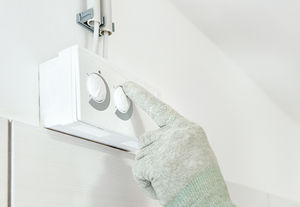 ASHRAE, the American Society of Heating, Refrigerating and Air-Conditioning Engineers, provides the technical foundation for international building practices and energy codes that balance the need for energy efficiency with the need to keep the indoor environment healthy and comfortable for occupants. ASHRAE’s stance on the design, construction and operation of buildings’ systems is to reduce the moisture through preventative measures and recover from normal wetting events by providing ventilation and indoor air that remains free of excessive humidity.3 ASHRAE’s standards and design guidance can help operational decision makers develop and improve best practices with respect to humidity control and moisture management in buildings reducing problems that result from excessive moisture, humidity, and microbial growth.
ASHRAE, the American Society of Heating, Refrigerating and Air-Conditioning Engineers, provides the technical foundation for international building practices and energy codes that balance the need for energy efficiency with the need to keep the indoor environment healthy and comfortable for occupants. ASHRAE’s stance on the design, construction and operation of buildings’ systems is to reduce the moisture through preventative measures and recover from normal wetting events by providing ventilation and indoor air that remains free of excessive humidity.3 ASHRAE’s standards and design guidance can help operational decision makers develop and improve best practices with respect to humidity control and moisture management in buildings reducing problems that result from excessive moisture, humidity, and microbial growth.
1 www.ashrae.org/file%20library/technical%20resources/bookstore/dampbldgs-humanhealth-hvacdesign.pdf
2 www.ashrae.org/file%20library/technical%20resources/bookstore/dampbldgs-humanhealth-hvacdesign.pdf
Prevention is the Solution
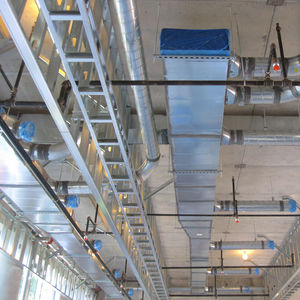 The best method for preventing moisture related health risks is to carefully control dampness in buildings. This involves much more than cleaning up leaks. It requires vigilant control of moisture entry into the building and prevention of condensation throughout mechanical systems, ductwork, and cold water piping. Condensation occurs on cold water piping and cold ductwork which are prime areas for unwanted moisture. In a damp environment, the insulation chosen for mechanical systems can work against indoor air quality if the insulation does get wet, a real problem for fibrous materials that will absorb and hold all that moisture. Selecting closed-cell elastomeric foam insulation is an excellent way to provide thermal efficiency while preventing condensation, eliminate moisture, and inhibit the growth of mold on mechanical equipment. The fact that closed-cell structures are inherently durable and virtually impermeable to water means better lifetime efficiency. This is recognized in ASHRAE Fundamentals 2021 which suggests that cold systems be protected through the use of very low permeance insulating material with a water vapor transmission rate (WVT) of 0.10 perm-inch or less. Closed-cell elastomeric foam, specifically ArmaFlex, has a very low permeability rating of only 0.05 perm-inch, and is one sure way to prevent health impacting moisture from invading a building.
The best method for preventing moisture related health risks is to carefully control dampness in buildings. This involves much more than cleaning up leaks. It requires vigilant control of moisture entry into the building and prevention of condensation throughout mechanical systems, ductwork, and cold water piping. Condensation occurs on cold water piping and cold ductwork which are prime areas for unwanted moisture. In a damp environment, the insulation chosen for mechanical systems can work against indoor air quality if the insulation does get wet, a real problem for fibrous materials that will absorb and hold all that moisture. Selecting closed-cell elastomeric foam insulation is an excellent way to provide thermal efficiency while preventing condensation, eliminate moisture, and inhibit the growth of mold on mechanical equipment. The fact that closed-cell structures are inherently durable and virtually impermeable to water means better lifetime efficiency. This is recognized in ASHRAE Fundamentals 2021 which suggests that cold systems be protected through the use of very low permeance insulating material with a water vapor transmission rate (WVT) of 0.10 perm-inch or less. Closed-cell elastomeric foam, specifically ArmaFlex, has a very low permeability rating of only 0.05 perm-inch, and is one sure way to prevent health impacting moisture from invading a building.
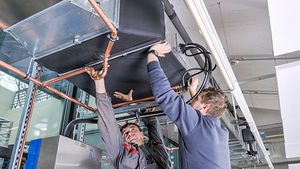 AP/ArmaFlex is manufactured with Microban® antimicrobial protection built-in to help prevent the growth of mold and mildew on the insulation, another way that insulation can help inhibit the development of poor indoor air quality that could affect occupants in damp environments. It is also GREENGUARD Gold certified for low volatile organic compounds (VOCs) that could also affect sensitive children and adults. This standard is designed to define low-emitting materials suitable for environments where people spend extended periods of time in places like schools and healthcare facilities.
AP/ArmaFlex is manufactured with Microban® antimicrobial protection built-in to help prevent the growth of mold and mildew on the insulation, another way that insulation can help inhibit the development of poor indoor air quality that could affect occupants in damp environments. It is also GREENGUARD Gold certified for low volatile organic compounds (VOCs) that could also affect sensitive children and adults. This standard is designed to define low-emitting materials suitable for environments where people spend extended periods of time in places like schools and healthcare facilities.
Microban® is a trademark of Microban Products Company and is used herein with permission.
Microban antimicrobial product protection is limited to the product itself and is not designed to protect the users of these products from disease causing microorganisms, food borne illnesses, or as a substitute for normal cleaning and hygiene practices. Microban International, Ltd. makes neither direct nor implied health claims for the products containing Microban® antimicrobial product protection. Data, photomicrographs and information presented are based on standard laboratory tests and are provided for comparative purposes to substantiate antimicrobial activity for non-public health uses.
GREENGUARD Certified products are certified to GREENGUARD standards for low chemical emissions into indoor air during product usage. For more information, visit spot.ul.com/greenguard
